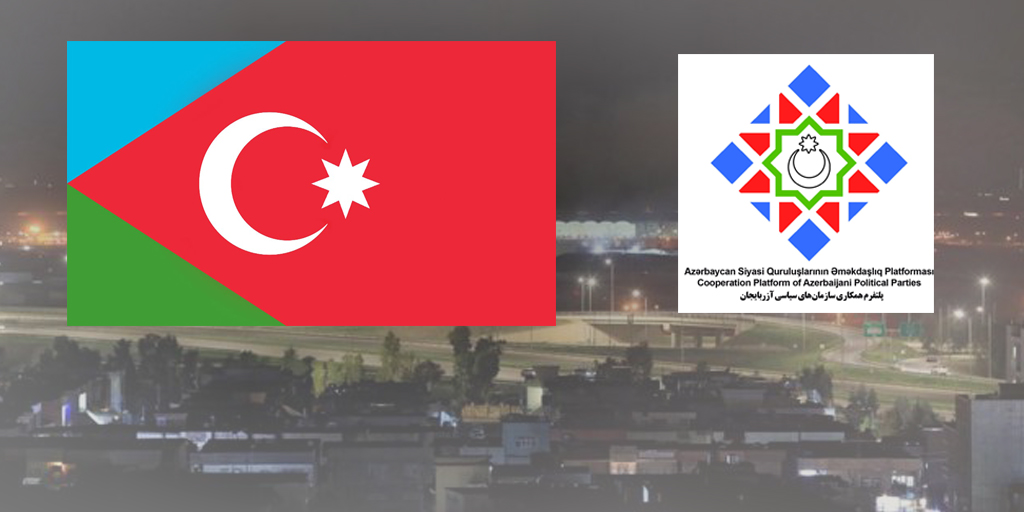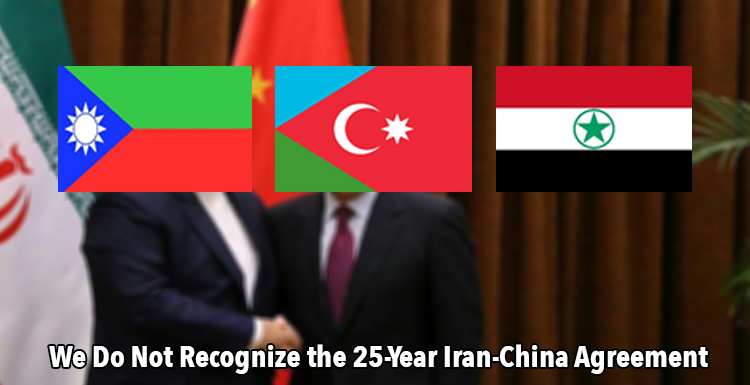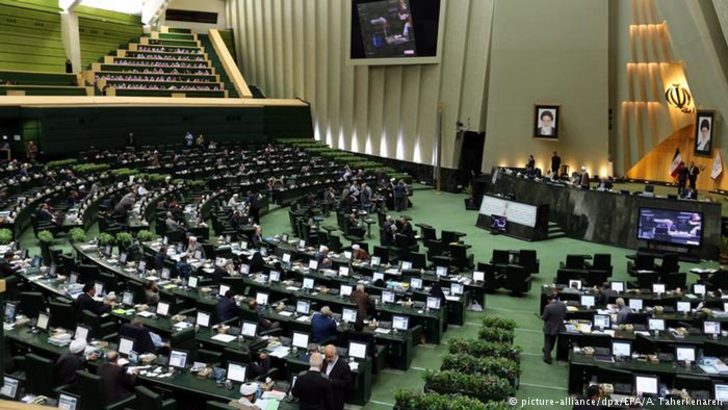South Azerbaijan Civil Rights Movement in Iran get idea of “Catalonia is not Spain”

South Azerbaijan Civil Rights Movement in Iran get idea of “Catalan is not Spain” and inspired by it. So, as supporters of F.C. Barcelona, in South Azerbaijan supporters of Tractorsazi Football Club opened a banner in stadium that write on it “South Azerbaijan Is Not Iran”. Here is the video of that event.
We have also received a petition from South Azerbaijan in the following terms:
The Azerbaijani Turkish population is the largest linguistic minority group in Iran, comprising The South Azerbaijanis are an estimated 25-35% of the total population of the country. They reside primarily in the Northwest of Iran bordered by Turkey and the state of Azerbaijan, though a significant number of communities are scattered throughout the country. Azerbaijanis speak a dialect of Turkish, closely related to the Azerbaijani-Turkish spoken in the Republic of Azerbaijan. Along with other minorities in Iran, Azerbaijanis are subjected to cultural, linguistic, and economic discrimination.
The South Azerbaijanis are concentrated in north-western Iran and make up the largest minority in the country. Since the establishment of the Pahlavi regime in 1925, Azerbaijanis, as well as other minorities in Iran, have been subjected to cultural, linguistic, and economic discrimination in law and practice. Farsi continues to be the only language of instruction in the Iranian education system within the multilingual country of Iran. Insufficient language education combined with systemic disparity means that many Azerbaijani people cannot escape generational poverty and remain economically and socially stagnant within their communities. The Azerbaijani population has long sought to end socio-economic and cultural inequality and to have the Azerbaijani-Turkish language included as a language of instruction in public schools.
Azerbaijani activists, including human rights defenders, journalists, writers and students who advocate for the rights of their oppressed community, risk frequent human rights violations ranging from arbitrary arrests to the death at the hands of Iranian Security Forces. All peaceful demonstrations demanding cultural rights, protesting socio-economic injustice, as well as calling for the protection of the environment, have been violently suppressed. Scores of people have been arrested. According to Amnesty International “those who seek to promote Azerbaijani cultural identity and linguistic rights are often charged with vaguely-worded offences such as “acting against state security by promoting pan-Turkism,”. Detainees are subjected to psychological and physical torture, which often yield false confessions.
One human rights activist, journalist Sa’id Metinpour, is currently serving an eight-year prison sentence for peacefully campaigning for basic rights for his community. Amnesty International calls him a prisoner of conscience.
The assault on Azerbaijani culture, language, and identity by the Iranian state-run media and press is not uncommon. Azerbaijanis are often stereotyped, insulted, and mocked in, not only the workplace and in person, but in the media as well. In spring of 2006 the government newspaper Iran Daily published a cartoon that depicted Azerbaijanis as cockroaches. Not only was the comparison insulting, but it also implied the need for mass extermination of an entire minority group. Dozens were killed and scores were arrested after Azerbaijanis took to the streets to protest the cartoon. Although the crackdown was brutal, much like the recent measures against the Iranian election protests, it received little attention from the international community.
As in many other parts of the world, women in Iran are victims of violence on a daily basis but Iran’s justice system provides no recourse for them. Even the little progress towards culturally-inclined respect for women’s rights, is hampered by Iran’s sexist and misogynistic legal system. Discriminatory laws in both the Iranian civil and penal codes play a major role in empowering men to not only commit acts of violence against women, but also to create a glass ceiling for women who actively campaign to change these laws. In the words of Azerbaijani poet and women’s rights activist, Faranak Farid,]“Race, ethnicity, gender, language and culture, social class, religion, place of residence, disability, etc. are factors which create inequality and discrimination. Often, women confront most of these forms of discrimination.” So minority women are victimized twice, as one Azerbaijani women’s rights activist stated, “We are both women and minorities; in the Islamic Republic of Iran, we are doubly accused.”
Members of Azerbaijani community, particularly women, also face difficulties in the criminal justice system because of their inability to speak and understand Farsi, the sole official language of Iran. An example of this is the case of Sakine Muhammadi Ashtiani, an Azerbaijani woman who was convicted of adultery and sentenced to death by stoning. Her son and lawyer believed that she did not receive a fair trial. They claim that her confession was acquired under pressure and, because she spoke only Azerbaijani-Turkish, she was unable to effectively communicate her case to her Farsi-speaking interrogators and in court.
In the Persian and Shia Muslim- dominated country of Iran, Azerbaijani religious minorities such as Sunnis, Alevis, Jews, Christians and Bahais face both ethnic and religious discrimination. Discrimination against non-Shia Azerbaijanis by the Iranian government is evidenced in their lack of opportunity to complete higher education, their prevention from establishing religious schools and non-governmental organizations, their difficulty obtaining state positions, and their experiences of discrimination in the Iranian justice system as evidenced by their receiving relatively heavier sentences. Reports obtained by Azerbaijani human rights group from Sunni and Alevi communities, show several members of these communities being sentenced to execution after unfair trials largely based on confessions obtained under torture and false documents allegedly prepared by the Ministry of Intelligence and National Security. In 2011, at least six members of the Azerbaijani-Sunni minority group were executed in Urmia Central Prison on accusations of drug trafficking. Another example of an unjust trial is the case of Mehdi Ghasemzadeh’s, a 27-year-old Azerbaijani male, belonging to the Alevi religious minority, who was executed in February 2009, after having been convicted of the charge of “enmity toward God”.
Also, reports from Sunni and Alevi communities from the Azerbaijani region show the Iranian officials impose financial hardship on farmers by redirecting water supplies away from the their villages and thus exposing their farms to water shortages.
The predominantly Azerbaijani-populated cities of Iran are also being confronted by a pending environmental catastrophe that will result in the drying-out of Lake Urmia, which is situated between West Azerbaijan and East Azerbaijan provinces, and is one of the largest salt lakes in the world. In the Azerbaijani cities of Urmia and Tabriz, to protest the Iranian Government’s poorly-planned irrigation and damming projects which are starving the lake of fresh water.
A violent police crackdown on Azerbaijani protesters ensued, resulting in scores of injuries, thousands of arrests, and, reportedly four deaths.
According to a February 2012 United Nations Environment Programme (UNEP) report, as lake levels decline, the exposed lakebed is left with a covering of salts, making a great salty desert on much of the 400 km² of lost surface area. These salt flats will not support agriculture and inhibit the growth of most natural vegetation. The salts are also susceptible to dispersion by wind and will likely create “salt-storms” like the ones that have resulted from the drying of the Aral Sea, located 1,200 km to the northeast of Lake Urmia.
In recent years, the Iranian government has built dams on more than 20 tributaries feeding into the lake. Environmental organizations and experts claim that this damming, coupled with an environmentally damaging bridge linking the cities of Urmia and Tabriz, has reduced the flow of water into and within Lake Urmia, causing the majority of the lake to evaporate.
The deterioration of Lake Urmia impacts 13 million local inhabitants, as well as the nations of Azerbaijan,Turkey, Iraq, and Armenia. According to Esmail Kahrom, a professor of environmental sciences at theUniversity of Tehran, if Lake Urmia dries up, “six to eight cities will be totally destroyed, covered by layers and layers of salt.”
For more information visit:
source:
www.helpcatalonia.cat


























